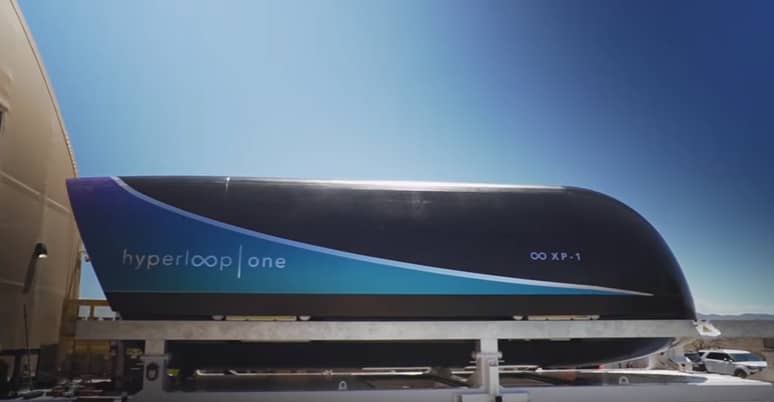
Achievement unlocked. Hyperloop One completed a high-speed test of its pod on its Nevada track test at the end of July, TechCrunch reports. The successful 192 mph test moves the company closer to its target speed for its planned pilot in Dubai.
The way the 1,640-foot concrete tube was laid out in the Nevada desert is an example of how it would be laid out in the Middle East. A photo published by Dezeen, provided a look at how this pressurized approach to tube-based transportation would appear. The tube could theoretically transport both passengers and cargo from point to point at high rates of speed.
A video on Hyperloop One’s YouTube page reminded some pundits of the technology often associated with Japanese bullet trains due to the absence of friction. Dezeen then explained how electromagnetic levitation means seeing the wheels retract on the pod for the technology to work.
The propulsion involved applied the equivalent of 3000 hp. to push the pod forward. The pod levitated with a pressure intense enough to match a depressurized aircraft “flying at 200,000 above sea level,” according to the Hyperloop blog entry of its founders, Shervin Pishevar and Josh Giegel. The pod itself measured 28.5 feet in length and 8.9 feet high.
The Hyperloop technology was first revealed in 2013 by technopreneur Elon Musk. He decided to open-source this landmark innovation with the help of his company, SpaceX. SpaceX unraveled the pod design competition in hopes of finding better ways to move passengers and shipments in shorter amounts of time. The initial vision was to connect San Francisco to Los Angeles by 30 minutes through the Hyperloop transport technology as opposed to the 5 and a half hour drive along Interstate 5.
TechCrunch reported the latest test established a new speed record.
The question is how will this technology speed up cargo? According to Dezeen, cargo that weighs about the same weight as a conventional passenger vehicle can potential go as fast as 671 mph based on mathematical equations generated by the Nevada test.










